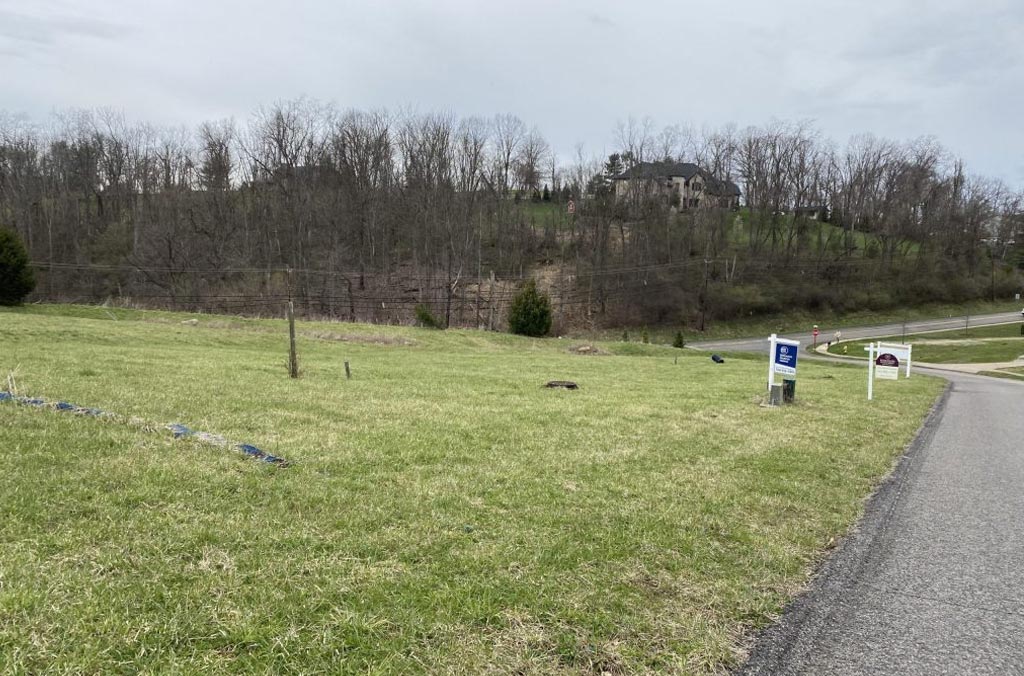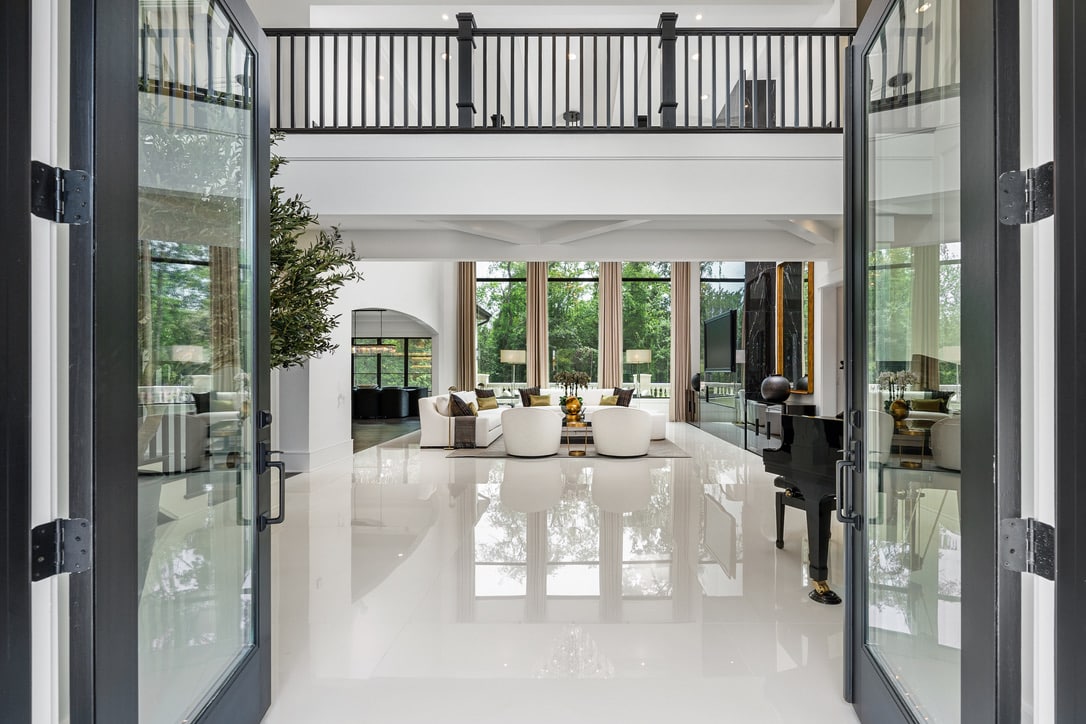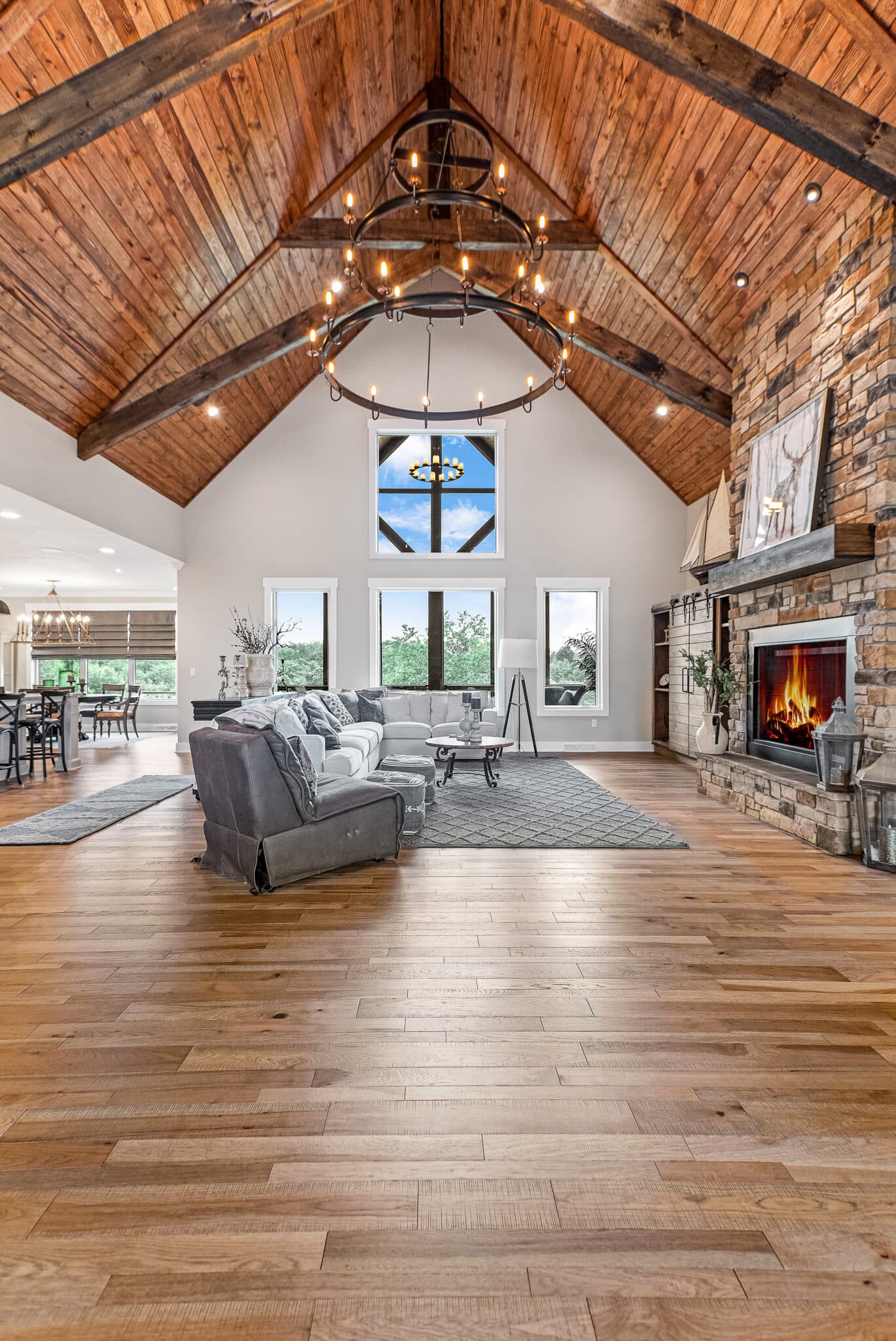Designing a custom home doesn’t have to be complicated. Most of the time, what overwhelms people isn’t the number of choices—it’s the lack of structure. When you work with a builder who actually leads the process, custom becomes clear.
At Costa Homebuilders, that’s what we do best. We help you take your ideas and shape them into a true custom home that’s functional, timeless, and personal. This guide breaks down exactly how to design a custom home without second-guessing every detail—and why you don’t need a design degree to get it right.
Introduction to Custom Homes
A custom home is built for you, not the market. It reflects how you live, what you care about, and how you plan to live years from now.
Designing custom means:
- You’re not choosing from a template.
- You’re not forced into someone else’s layout.
- You’re starting with your needs—not what a developer thinks you’ll settle for.
Collaborating with an architect and the contractor is crucial to ensure the home aligns with your vision, budget, and practical building applications.
Custom homes also require the right team. You need a builder who listens, understands how to manage the process, and helps you avoid decisions that derail the build. That’s where Costa’s New Life process comes in.
Defining Your Dream Home
Defining your dream home is a crucial step in the custom home building process. It starts with creating a clear vision of what you want your custom home to look like, including its design style, floor plan, and features. A custom home builder can help you bring this vision to life by working closely with you to create a design that meets your needs and budget.
When defining your dream home, consider factors such as the number of bedrooms and bathrooms, living areas, and outdoor spaces. Think about your lifestyle and how you plan to use your home. For example, if you enjoy cooking, you might want a large kitchen with high-end appliances. If you have a large family, a spacious living room with plenty of seating could be a priority.
By working with a custom home builder, you can create a dream home that is tailored to your unique needs and preferences. This process involves thoughtful planning and clear communication, ensuring that every detail aligns with your vision and lifestyle.
Planning Your Custom Home Build
Start with clarity. Not granite. Not square footage. Not wall colors.
That means:
- Defining the scope of your project
- Establishing a budget range
- Understanding what’s most important to you (space? layout? natural light?)
It’s also crucial to consult a financial advisor to ensure your budget is realistic and supported through appropriate financing options.
We’ve worked with families who wanted wide-open kitchens with oversized islands. Others prioritized quiet corners for working from home. Some cared about outdoor living space above all else.
Designing a custom home starts by answering one question: How do you want to live?
Designing Your Custom Home
Once the lifestyle questions are clear, the design process gets easy.
We don’t hand you 100 floor plans and hope something sticks. We work through your goals room by room, so the layout reflects how you’ll use the space every day. That means:
- Placing the primary suite away from high-traffic areas
- Creating a kitchen that works for real cooking, not just showpieces
- Making sure natural light and views drive the orientation of your home
Costa designs around function first. Then we help you select materials that match the quality of the layout.
Building a Custom Home Team
You don’t need to manage architects, contractors, designers, and vendors on your own.
Costa brings the entire process under one roof. That includes:
- In-house design consultations
- Trusted local vendor partners
- Clear project management from design through construction
It is also important to obtain references from sub contractors to ensure effective project management and high construction quality.
When your builder controls the process, nothing gets lost between steps—and your decisions don’t get misinterpreted.
The Custom Home Building Process
Design is just the beginning. Here’s how Costa moves a project from concept to completion through a well-defined construction process:
- Planning: We finalize layout, material selections, and build timeline
- Permits and Pre-Construction: We handle code requirements, township approvals, and site logistics
- Construction: From excavation to framing, mechanicals to finishes, every stage of the construction process is scheduled and tracked
- Final Walkthrough and Close-Out: We walk the home with you and address any finishing touches before you move in
You’re never left wondering what comes next—or who to call when you have a question.
Budgeting and Financing
Designing a custom home also means designing to a budget. At Costa, that happens early—before decisions get too far along.
We help you:
- Understand total project cost based on your selections and lot
- Make informed decisions about how much to spend on various aspects of the project
- Balance upgrades with buildable value
- Prioritize what matters most to your lifestyle
- Avoid underestimating site costs, utilities, or township requirements
Realistic budgets don’t limit creativity—they focus it.
Construction and Project Management
A great design still needs to be executed correctly. That’s why Costa manages every phase of construction with full transparency. You’ll get:
- Regular progress updates
- Site meetings during critical phases
- A builder who stays accountable to schedule and cost
Additionally, a general contractor plays a crucial role in managing the project phases, ensuring that each aspect of the construction is coordinated smoothly.
From the first dig to the final coat of paint, you know what’s happening—and why.
Obtaining Necessary Permits and Approvals
Obtaining the necessary permits and approvals is a critical step in the custom home building process. Before construction can begin, you will need to secure various permits from your local government, including building permits, zoning permits, and environmental permits. A custom home builder should navigate this complex permitting process, ensuring that all necessary approvals are in place before construction starts.
This process often involves working with local officials to obtain permits and conducting inspections to ensure that your home meets all relevant building codes and regulations. By obtaining the necessary permits and approvals, you can ensure that your custom home is built safely and to code, avoiding potential fines or penalties.
Working with a reputable custom home builder who has experience with the permitting process is essential. They can guide you through each step, providing peace of mind and ensuring that your custom home build proceeds smoothly and compliantly.
Home Design Elements That Matter
A custom home doesn’t need flashy features to feel impressive. Most of the time, it’s the layout that makes or breaks a design.
Here’s what we focus on:
- Logical flow from space to space
- Room placement based on how light moves through the house
- Flex rooms that evolve with your lifestyle
- Thoughtful use of storage, zoning, and ceiling height
- Thoughtful lighting design to enhance functionality and aesthetics
Smart design doesn’t draw attention to itself. It just works.

Avoiding Common Design and Build Mistakes
Designing a custom home gives you control over numerous design decisions—but that doesn’t mean everything needs to be customized.
We help you avoid mistakes like:
- Choosing trendy over timeless
- Over-customizing rooms you’ll barely use
- Ignoring site topography when planning your layout
- Picking materials based on photos instead of how they function day to day
Our job is to prevent regret—not sell upgrades.
Custom vs. Production Homes
Here’s the difference:
- Production homes give you a list of options and tell you where your home can go.
- Production builders construct a high volume of homes using preselected designs, which limits design and customization.
- Custom homes start with your priorities—and everything follows from there.
We’ve seen clients compare multiple production home models only to end up designing something entirely different. Not because they wanted to be difficult—but because they wanted a home that felt like it was made for them.
Creating a Functional Home
Good design isn’t about how it looks when staged—it’s about how it works when you live in it.
We ask the questions that make functionality happen:
- Where do shoes pile up?
- Who needs a quiet place to work?
- How do you host guests?
- What rooms should connect—and what rooms should be separated?
Function shows up in flow, not in square footage.
Staying Up-to-Date with Design Trends
Custom doesn’t mean outdated. But it also shouldn’t mean designing your home around Instagram trends.
We help you:
- Incorporate energy efficiency, smart tech, and sustainability features to improve your home’s efficiency
- Use modern materials in ways that last
- Stay aware of what’s current—without locking you into what’s temporary
Your home should still feel good to live in ten years from now.
Finalizing Your Custom Home
The final phase is where most builders drop the ball. Not here.
Costa handles:
- Fixture installation
- Paint and finish review
- Final inspections and code compliance
- A detailed client walkthrough
- Post-move-in support
- Selection and installation of plumbing fixtures
You don’t get handed the keys and forgotten.
Moving into Your New Home
Moving into your new custom home is an exciting milestone, but it can also be overwhelming. From unpacking and organizing your belongings to getting familiar with your new neighborhood, there are many things to consider. A custom home builder can help make this transition smoother by providing you with a comprehensive guide to your new home, including information on its systems and features.
Take the time to review your home’s warranty and understand what is covered and for how long. Additionally, consider hiring a professional organizer to help you unpack and get settled into your new space. Planning and preparation can make the transition into your new custom home as smooth and stress-free as possible.
Remember to take care of final details such as updating your address, setting up utilities, and introducing yourself to your new neighbors. With a little planning and preparation, you can enjoy your new custom home and make it a place where your family can thrive for years to come.
Maintenance and Warranty
Every Costa home includes a warranty—and our team is always available for follow-up to ensure you feel comfortable in your new home.
We also provide guidance on regular maintenance, seasonal upkeep, and long-term care. A well-built home only stays that way when it’s maintained properly—and we help make that part clear, too.
What Our Clients Say
“Costa Homebuilders exceeded my expectations on the quality of their work. The materials used from the structure of the house to the interior were of high quality.”
Ken Miller,
Pittsburgh-Area Homeowner
Final Thought: You Don’t Need to Be a Designer—You Just Need the Right Builder
Designing a custom home doesn’t have to be complex, and it shouldn’t be stressful. If you start with a builder who actually listens, the process unfolds the way it should: clearly, logically, and without surprises.
Costa Homebuilders has helped hundreds of Pittsburgh families design homes that reflect who they are—and we’re ready to help you do the same.
Contact us today to schedule your consultation and take the next step toward building your custom home.



